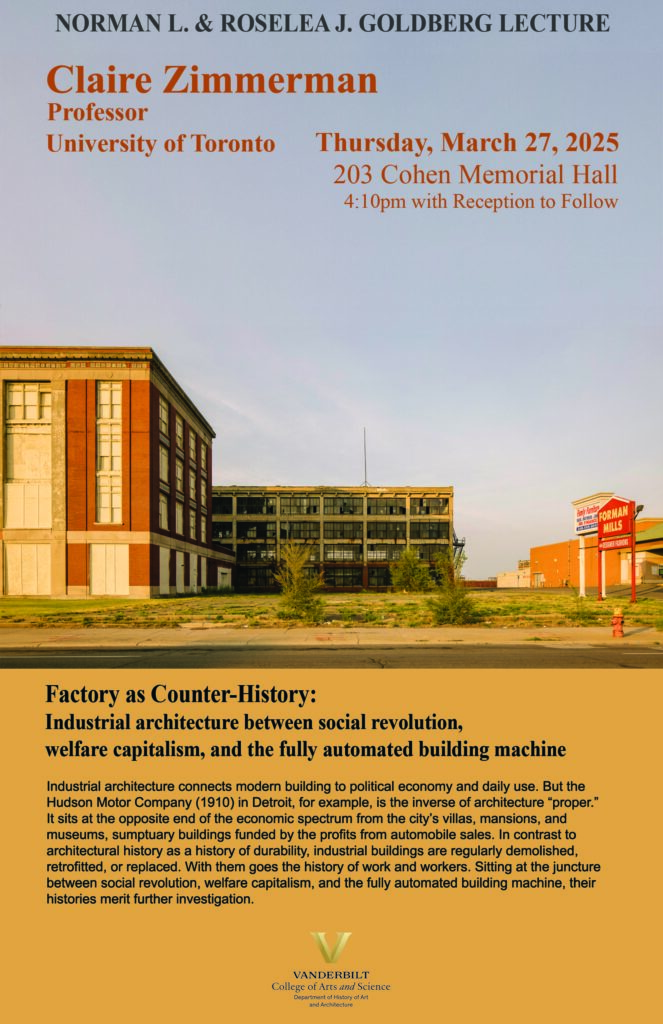Goldberg Lecture – Factory as Counter-History: Industrial architecture between social revolution, welfare capitalism, and the fully automated building machine
The Vanderbilt University Department of History of Art and Architecture is thrilled to present the Norman L. and Roselea J. Goldberg Lecture in Art History, Factory as Counter-History: Industrial architecture between social revolution, welfare capitalism, and the fully automated building machine. This lecture will be presented by University of Toronto Professor Claire Zimmerman on Thursday, March 27, 2025 in 203 Cohen Memorial Hall. A reception will follow the lecture in the atrium of Cohen Memorial Hall.
This talk examines modern architecture between political economy and daily use. Taking up recent work on private capital and state power mediated by buildings, the talk presents findings from a new book on Albert Kahn Inc. (forthcoming 2025) that grounds this mediation in industrial buildings, their role in society, and their daily use. To characterize industrial building as the inverse of architecture “proper” may overstate the case; but such a claim nonetheless illuminates this investigation. Detroit’s Hudson Motor Company, for example, sits at the opposite end of the economic spectrum from sumptuary buildings in the same context–the villas, mansions, and museums of those making automobiles in 1910–that are funded by the profits of the factory that sells increasing numbers of cars. Manufacturing facilities, one of the fixed costs of doing business, immovably house the fluctuating and variable costs of raw materials and labor, exerting downward pressure on the wages of their occupants. Such a structural antagonism between buildings and their inhabitants is striking. And yet, it can be frequently found in the built environment writ large. The regular disappearance of industrial buildings—another point of difference with the history of architecture as a history of durability—is part and parcel of the socioeconomic work that they do. Inherently mutable, they are regularly demolished, retrofitted, or replaced. With them goes the history of those who worked inside their walls, who are thereby doubly disadvantaged. These buildings provide a counter history of architecture that may prove the rule, through the exception, but they also chronicle mass society. Sitting at the juncture between social revolution, welfare capitalism, and the fully automated building machine, their architectural capacities are still poorly understood. Thus are they cut off from possible futures grounded in environmental and functional efficiencies, social welfare programs, and architectural amenity—the protocols of early twentieth-century industrial building.
This event is sponsored by the Department of History of Art and Architecture.

